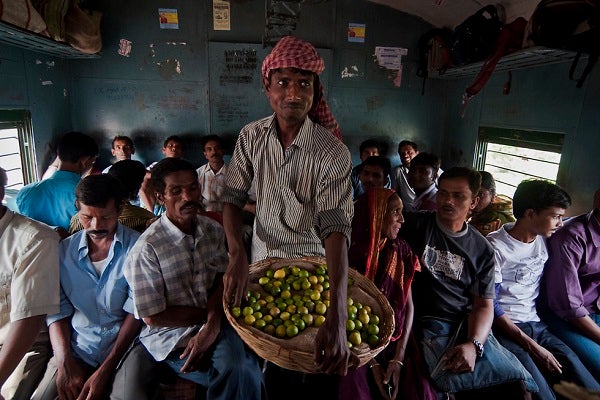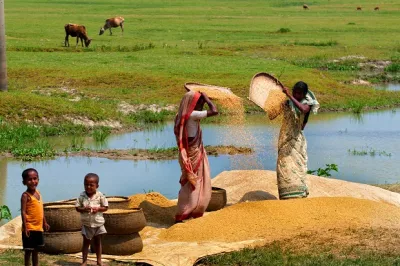Digital Social Payments in India: Can the Challenges Be Overcome?
Three years ago, India began transferring government benefits directly into recipients’ bank accounts in 43 of its 686 districts. The program, known as the Direct Benefit Transfer (DBT), was envisioned as a digital revolution for government transfers.
Designed to replace traditional schemes with cash transfer-based ones, DBT is built on a technological platform linking bank accounts, unique identification numbers and mobile phone numbers. It was seen as a means to further the government’s anti-poverty agenda in an efficient manner – by plugging leakages and fixing errors of exclusion in the short run, and by bringing all such transactions into one common account in the long run.
Three years on, the DBT program has seen a regime change at the center, undergone multiple facelifts and remains at the forefront of the government’s agenda to transfer benefits electronically in an efficient and cost-effective manner. In terms of the readiness of the country to undergo this transformation, however, the government continues to face several challenges in digitizing transfers.

Key challenges:
- Lack of adequate banking infrastructure. In India, there are 10.5 bank branches for every 100,000 adults. While the number of Jan Dhan bank accounts opened as per the latest estimates stands at 220 million, reaching the last-mile user remains a problem and contributes to the number of dormant accounts. Take for instance the case of pension or scholarship payments, where instead of receiving cash at their doorsteps through postal services, the beneficiaries now have to travel miles to reach the bank and withdraw their payments. It becomes glaringly obvious that digitizing transfers does not always work in favor of the poor, unless supplemented with innovative ways of facilitating its use. While the theory of DBT works like magic, the current banking infrastructure does not seem prepared to meet these rising needs, especially those of the rural poor.
- Enrollment in the Aadhaar Registry. For DBT to work to its full potential, it would require enrollment of the entire adult population in the Aadhaar registry, the unique identification program. Although, around 75% of the population has been enrolled so far, the process of linking the Aadhaar number to a bank account number has been slow. As per the latest estimates, only 48% of bank accounts opened through the government’s Pradhan Mantri Jan Dhan Yojana (PMJDY) financial inclusion program are Aadhaar seeded.
- Poor Network Connectivity. Mobile phone use is important for the DBT platform, as recipients learn of their payments through mobile alerts. However, poor network connectivity is a barrier. Moreover, the policy push to transition to a cash-lite economy requires greater use of smartphones and mobile money wallets to make digital transactions, further emphasizing the importance of good network connectivity.
- Lack of Grievance Redressal Mechanism. One major area of concern is the ambiguity that exists around how to address grievances. For example, if the recipients face any delay, or if there are discrepancies in the payment amounts, who is to be held responsible? Should the consumer go to the banks or to the relevant government department initiating the cash transfer?
The way forward
The government recognized these challenges in the last economic survey. A detailed explanation was put forth suggesting that only perhaps a few subsidy schemes could actually be replaced by cash transfers. A workaround has been initiated, meanwhile, to tighten the implementation of subsidy-based schemes. Under the program, Biometrically Authenticated Physical Uptake (BAPU) recipients can collect their benefits at a store or government agency using the biometric features of their Aadhaar number. This prevents leakages and duplicity of social welfare cards while giving recipients an alternative way to collect their dues.
Yet problems remain. Fertilizer subsidies, for example, illustrate continued challenges: Given the lack of digitized land records in all states, and a complicated (often blurry) understanding of property rights in rural India, targeting for the scheme is a huge roadblock. Indeed, despite the economic survey suggesting that fertilizer subsidies could be completely replaced by a direct transfer, not much progress has been made in 2016. The scheme will be piloted only in October 2016 – and only in 16 districts – before any further decision is made. Similarly, in the case of providing food staples through the Public Distribution System program, reports suggest that the introduction of Aadhaar-enabled point-of-sale machines caused serious trouble in some states as it failed to recognize fingerprints of recipients, leading to exclusion issues.
With the government being able to use cash transfers at such a large scale for disbursement of social welfare schemes, it is evident that digital transfers are quicker and more efficient. The digitization trend is expected to continue as it offers a host of benefits over traditional subsidy-based schemes. While the Indian government’s intent is indeed positive, much remains to be done before making such a drastic transition. The government needs to take stock of its preparedness of making social payments digital in view of the challenges mentioned above. Primarily, building alternative infrastructure to support the banking sector could be the first step. On the consumer side, enforcing digital transactions and receiving payments in banks could be overwhelming at first. Steps taken to make the end user more accustomed to this process could go a long way in including the unbanked in the digital financial world.




Add new comment